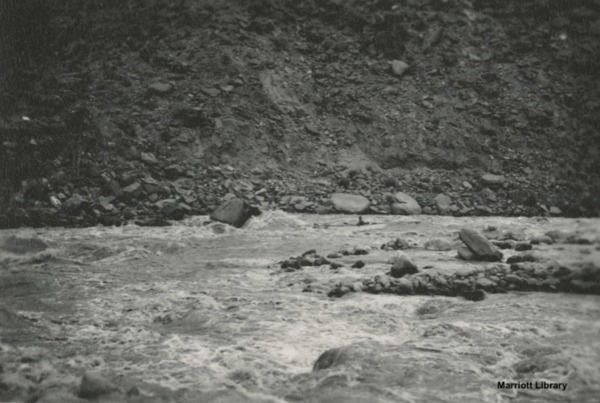Dublin Core
Title
Description
In the late 1920s, the state of Utah wanted to use the riverbeds of the Colorado River and its tributaries for oil and mineral exploration. The states in the Colorado River Basin had recently divided up its waters, but the riverbed – that is, the land beneath the flowing rivers – was seemingly up for grabs. Utah staked its claim, but the federal government sued. At the conclusion of the case in 1931, the courts decided that Utah owned the riverbed -- but only in certain sections.
The crux of that decision was whether the rivers were navigable. The legal argument went something like this: Utah held title to rivers within the state’s borders according to what is known as the public trust doctrine. On becoming a state in 1896, Utah assumed ownership of the rivers from the federal government on the condition that it maintain them for the public’s benefit. The state would be able to use the riverbeds, even for something like oil exploration, so long as it did not diminish public use of the rivers – for fishing or rafting, for example. But the public trust doctrine only applied to waters that were navigable. And just to add a wrinkle, legal navigability relied on the water's use as a permanent highway for commerce.
To help make its case that these rivers were navigable, the state of Utah called upon river runners to provide expert testimony about their experiences on the Green and Colorado Rivers. Although their adventures were not characteristic of typical commercial travel, they were closely acquainted with the hazards of the rivers. Frederick Dellenbaugh, a member of John Wesley Powell’s historic exploratory expedition, served as one of the witnesses. The state also called geologists, scientists, and engineers as experts.
As with much of Western water law, the decision was not entirely straightforward. The courts carved up the rivers into sections, and the navigable parts went to the state of Utah, while the non-navigable sections were retained by the federal government. In the West, waterways have long been considered a public resource. But who manages public resources and what constitutes public benefit are not always simple questions to answer.
Creator
Source
_______________
See United States v. Utah, 283 U.S. 64 (1931); John Weisheit, “About the Colorado Riverbed Case,” in Colorado Riverbed Case collection, J. Willard Marriott Library; Roderick E. Walston, “The Public Trust Doctrine in the Water Rights Context,” Natural Resources Journal 29 no 2 (Spring 1989).

